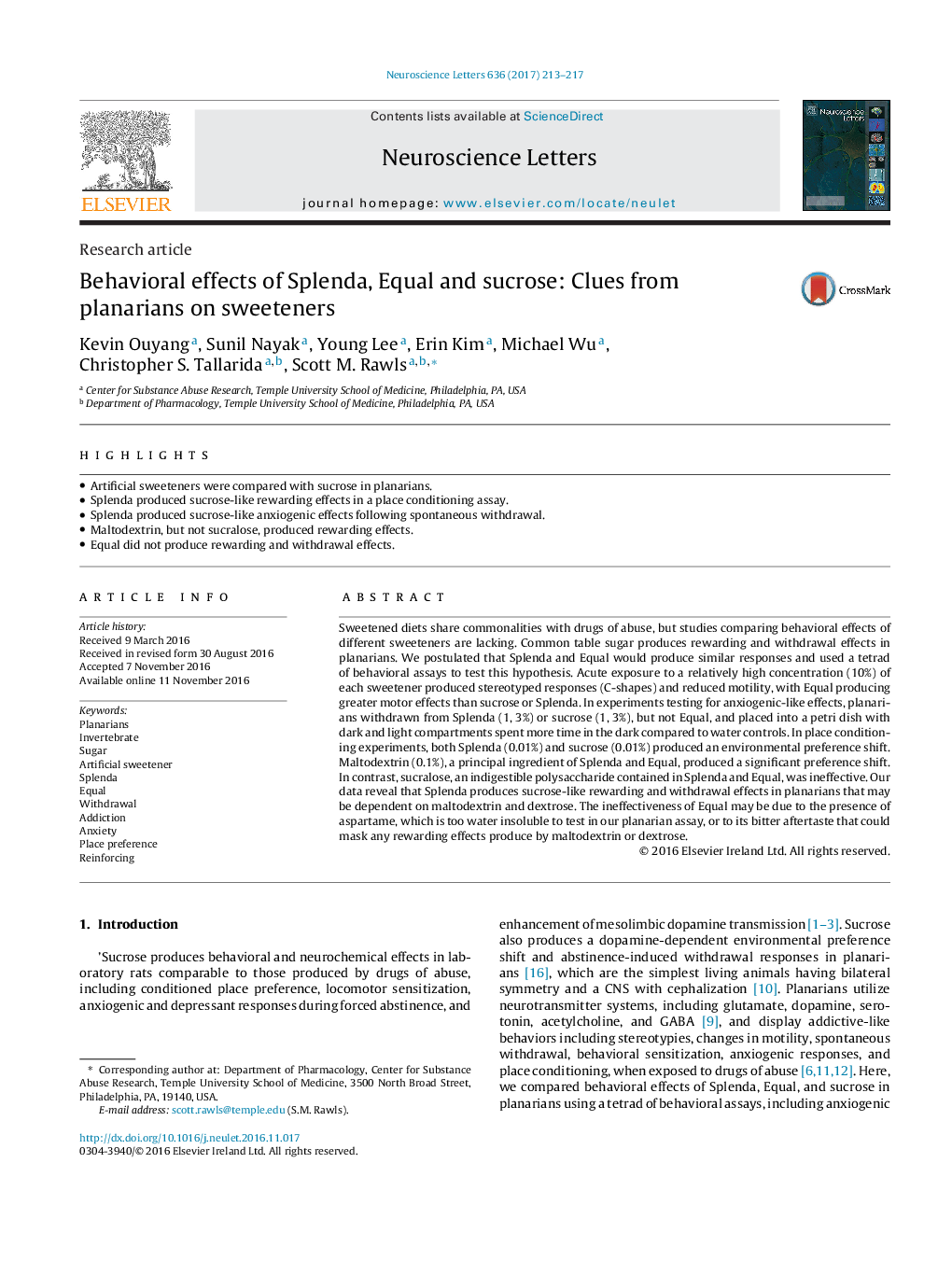| کد مقاله | کد نشریه | سال انتشار | مقاله انگلیسی | نسخه تمام متن |
|---|---|---|---|---|
| 5738742 | 1615063 | 2017 | 5 صفحه PDF | دانلود رایگان |

- Artificial sweeteners were compared with sucrose in planarians.
- Splenda produced sucrose-like rewarding effects in a place conditioning assay.
- Splenda produced sucrose-like anxiogenic effects following spontaneous withdrawal.
- Maltodextrin, but not sucralose, produced rewarding effects.
- Equal did not produce rewarding and withdrawal effects.
Sweetened diets share commonalities with drugs of abuse, but studies comparing behavioral effects of different sweeteners are lacking. Common table sugar produces rewarding and withdrawal effects in planarians. We postulated that Splenda and Equal would produce similar responses and used a tetrad of behavioral assays to test this hypothesis. Acute exposure to a relatively high concentration (10%) of each sweetener produced stereotyped responses (C-shapes) and reduced motility, with Equal producing greater motor effects than sucrose or Splenda. In experiments testing for anxiogenic-like effects, planarians withdrawn from Splenda (1, 3%) or sucrose (1, 3%), but not Equal, and placed into a petri dish with dark and light compartments spent more time in the dark compared to water controls. In place conditioning experiments, both Splenda (0.01%) and sucrose (0.01%) produced an environmental preference shift. Maltodextrin (0.1%), a principal ingredient of Splenda and Equal, produced a significant preference shift. In contrast, sucralose, an indigestible polysaccharide contained in Splenda and Equal, was ineffective. Our data reveal that Splenda produces sucrose-like rewarding and withdrawal effects in planarians that may be dependent on maltodextrin and dextrose. The ineffectiveness of Equal may be due to the presence of aspartame, which is too water insoluble to test in our planarian assay, or to its bitter aftertaste that could mask any rewarding effects produce by maltodextrin or dextrose.
Journal: Neuroscience Letters - Volume 636, 1 January 2017, Pages 213-217